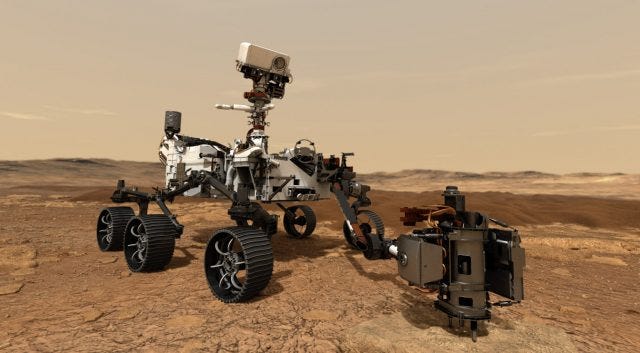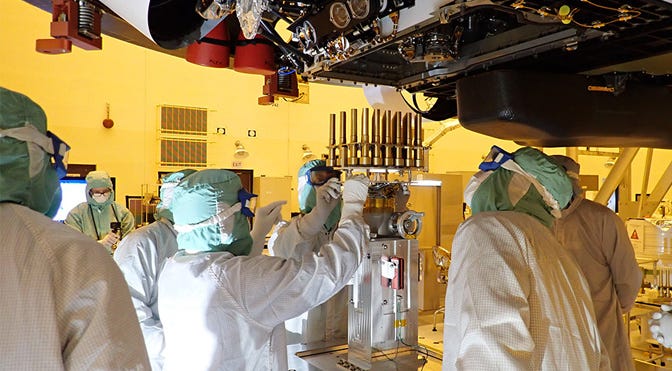NASA's Ambitious Plans for Mars Sample Retrieval Mission
Written on
Chapter 1: Overview of Mars Exploration
NASA has dispatched a variety of robotic explorers to Mars throughout the years, analyzing samples and studying the intriguing geology of the red planet. However, there remains a wealth of knowledge to be gained from examining Martian samples directly on Earth. The recently launched Perseverance rover is set to lay the foundation for this endeavor by gathering samples intended for return to our planet.

Chapter 2: The Role of the Perseverance Rover
NASA has officially announced its partnership with the European Space Agency (ESA) to facilitate the return of these samples, although the mission's expenses are expected to be significant. Perseverance, formerly referred to as Mars 2020, is based on the highly successful design of the Curiosity rover. Upon landing on Mars early next year, Perseverance will begin its quest to uncover signs of life. During its exploration, it will collect samples of Martian material and store them in 43 specially designed tubes housed within the rover.
Section 2.1: Technical Capabilities
Equipped with a 2-meter robotic arm, Perseverance will perform much of its sample collection work. Additionally, a smaller 0.5-meter arm located underneath the rover will assist in obtaining core samples for storage.
Section 2.2: Sample Handling Protocol
The rover will not analyze these samples on the Martian surface; instead, it will measure their volume and capture images of each tube. Following this, it will await the Mars Sample Return (MSR) mission.
The first video provides an overview of the Mars Sample Return mission, detailing how the samples will be collected and eventually brought back to Earth.
Chapter 3: Mission Phases and Collaborations
NASA has indicated that the MSR mission has progressed into Phase A development, during which both NASA and ESA will finalize specific mission components.

The current strategy involves NASA supplying a lander and rover, while ESA will create an orbiter. After the planned launch in 2026, the lander aims to land close to Perseverance's site in Jezero Crater. Its mission will be to rendezvous with the existing rover—a groundbreaking achievement in robotic Mars exploration. Depending on the status of the Mars 2020 mission, there is even a possibility that Perseverance could meet the MSR rover en route.
Section 3.1: Challenges of the MSR Mission
One of the most significant hurdles of the MSR mission will be retrieving the samples from the Martian surface. The rover will be equipped with a small rocket capable of escaping Mars' low gravity to rendezvous with the ESA orbiter. While independent assessments support NASA's decision to advance with the mission, concerns have been raised about the potential impact of high costs on other projects.
The second video offers an update on the Mars Sample Return Program, discussing the challenges and milestones achieved thus far.
Section 3.2: Financial Implications
NASA estimates the cost of returning the 43 sample tubes to Earth will range from $2.9 to $3.3 billion; however, an independent review board suggests the actual cost may be closer to $3.8 to $4.4 billion. NASA plans to finalize its latest planetary science decadal survey in 2022, which will likely propose exploration priorities for the upcoming decade. However, if MSR consumes a substantial portion of the budget, it could limit NASA's ability to pursue all recommended initiatives.
Now read: NASA and ESA Lay Groundwork for Mars Sample Return Mission, Perseverance Rover Will Take a Tiny Piece of Mars Home to the Red Planet, NASA’s Mars Helicopter Powers Up in Space.